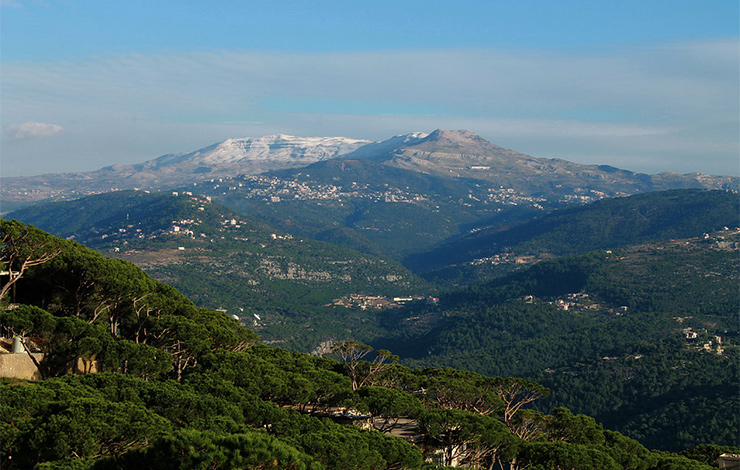This program strengthened legal and institutional infrastructures at the West Africa North Asia (WANA) regional level to develop and manage himas – protected land for sustainable use by local communities. SPNL developed a training curriculum and held a multi-disciplinary workshop that resulted in the adoption of a Hima WANA Charter and the piloting of three hima sites in Lebanon, Syria, and Jordan.
Challenge

It is increasingly recognized that environmental conservation is not possible without the active involvement of local communities. This is especially true in the case of natural resource management in the MENA region, where overuse has led to losses in productivity and biodiversity and has negatively impacted ecosystems. Conventional models of conservation have focused on centralized planning and decision-making processes, relying heavily on governments for conservation. While there has been some success in saving threatened species and protecting their habitats, this success is increasingly undermined by growing conflicts over natural resources and local communities’ increasing opposition to government-led conservation efforts due to violations of their land rights.
One community-based approach to conservation is the hima. The hima is a system for preserving traditionally protected areas, which has been practiced for more than 1500 years in the Arabian Peninsula. In Arabic, “Hima” means “a protected area” that is used for the public good, and it takes into consideration the interaction between nature conservation and human well-being. The hima system aims to protect land and ensure the sustainable use of natural resources by and for local communities, thus ensuring fair use of resources and biodiversity. A hima, therefore, is one of the most successful systems for integrating nature conservation with human well-being, and recognizes the importance of demonstrating the relationship between protected areas and the public good through activities ranging from capacity building, services for the poor, and evaluating and improving adherence to environmental laws. The hima represents a distinct opportunity to promote multidisciplinary and sustainable approaches to addressing challenges in access to environmental justice.
Program Summary
This program was designed to propose recommendations for strengthening legal and institutional infrastructures for developing and managing himas at the West Africa North Asia (WANA) regional level in order to protect the environment and environmental rights of the region’s local populations. SPNL developed a training model for the WANA region to introduce the hima environmental conservation system to target communities, including a discussion of the environmental, economic, and social implications of selecting potential hima sites. The end goal of the workshop was to devise a strategy for including himas in protected area management across the WANA region through the following activities:
- Review progress in country-level progress in designating protected areas, and conduct a comparative assessment of conservation attempts across the WANA region;
- Explore different systems of hima governance across the WANA region, and identify constraints and opportunities for each one;
- Networking capacity building through peer learning across countries;
- Recognize the role of hybrid himas in conserving biodiversity and encouraging sustainable socio-economic development;
- Identify necessary resources and tools for encouraging stakeholders to adopt the hybrid hima approach;
- Establish a regional legal and policy framework for the development of hybrid himas;
- Develop recommendations for follow-up action at policy and programmatic levels.
Impact
The workshop was successfully implemented by the Society for the Protection of Nature in Lebanon (SPNL), the World Justice Project (WJP), the United Nations University – Institute for Water, Environment and Health (UNU-INWEH) and the West Asia - North Africa (WANA) Forum, in partnership with the Research Center for Islamic History, Art and Culture (IRCICA) through a three day regional workshop on hima governance, held at IRCICA in Istanbul, Turkey on April 14-16, 2011.
The workshop convened 32 participants from countries across the WANA region, including representatives from NGOs, government agencies, universities, and local communities. Participants examined traditional and contemporary approaches in community-based resource management (such as himas) and governmental protected area management (such as nature reserves), with particular focus on socio-economic development and legal mechanisms for regional cooperation. The workshop highlighted the importance of the hima as a concept that emerges from within the WANA region – as opposed to copying imported resource management models – and emphasized the importance of empowering local stakeholders, developing sound political and legal frameworks, and their impact on economic and political stability.
The workshop participants agreed on the following:
- To collaborate as founding members of a hima network in the WANA region;
- To adopt the Hima WANA Charter; and
- To test the hima approach at selected sites 3 countries: Lebanon, Syria and Jordan.
The practical objectives for HIMA WANA Charter are:
- To revive of the hima approach in the WANA region;
- To establish pilot projects at the national level;
- To develop regional projects, including the selected country sites;
- To build the capacity of partners managing hima sites;
- To advocate for the adoption of the hima approach in national policy, as a complement to the current centralized system; and
- To raise funds for the hima revival and project.
Partners
- United Nations University – Institute for Water Environment and Health (UNU-INWEH)
- The West Asia - North Africa (WANA) Forum
- The Research Center for Islamic History, Art and Culture (IRCICA)

